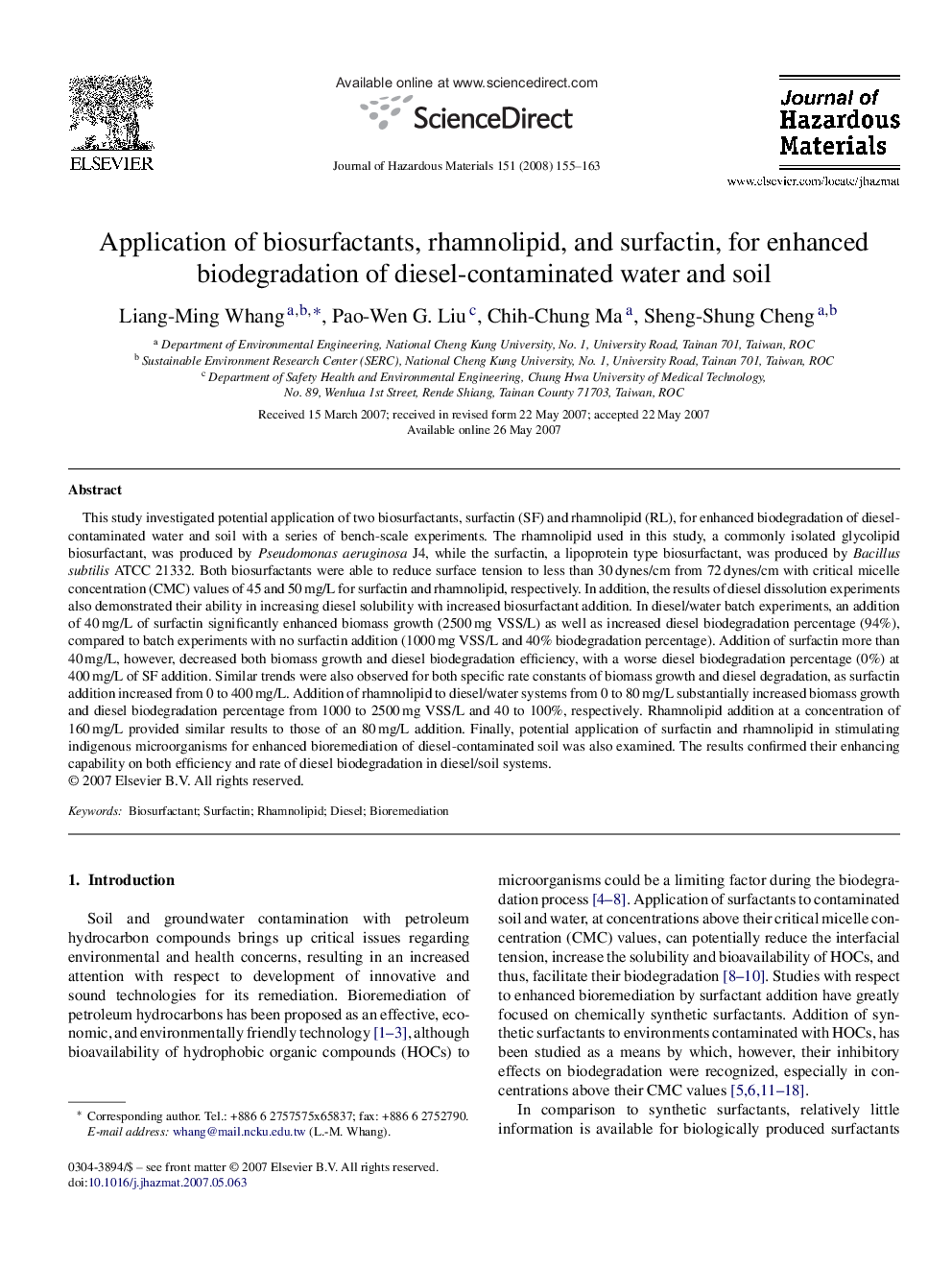| Article ID | Journal | Published Year | Pages | File Type |
|---|---|---|---|---|
| 583538 | Journal of Hazardous Materials | 2008 | 9 Pages |
Abstract
This study investigated potential application of two biosurfactants, surfactin (SF) and rhamnolipid (RL), for enhanced biodegradation of diesel-contaminated water and soil with a series of bench-scale experiments. The rhamnolipid used in this study, a commonly isolated glycolipid biosurfactant, was produced by Pseudomonas aeruginosa J4, while the surfactin, a lipoprotein type biosurfactant, was produced by Bacillus subtilis ATCC 21332. Both biosurfactants were able to reduce surface tension to less than 30Â dynes/cm from 72Â dynes/cm with critical micelle concentration (CMC) values of 45 and 50Â mg/L for surfactin and rhamnolipid, respectively. In addition, the results of diesel dissolution experiments also demonstrated their ability in increasing diesel solubility with increased biosurfactant addition. In diesel/water batch experiments, an addition of 40Â mg/L of surfactin significantly enhanced biomass growth (2500Â mg VSS/L) as well as increased diesel biodegradation percentage (94%), compared to batch experiments with no surfactin addition (1000Â mg VSS/L and 40% biodegradation percentage). Addition of surfactin more than 40Â mg/L, however, decreased both biomass growth and diesel biodegradation efficiency, with a worse diesel biodegradation percentage (0%) at 400Â mg/L of SF addition. Similar trends were also observed for both specific rate constants of biomass growth and diesel degradation, as surfactin addition increased from 0 to 400Â mg/L. Addition of rhamnolipid to diesel/water systems from 0 to 80Â mg/L substantially increased biomass growth and diesel biodegradation percentage from 1000 to 2500Â mg VSS/L and 40 to 100%, respectively. Rhamnolipid addition at a concentration of 160Â mg/L provided similar results to those of an 80Â mg/L addition. Finally, potential application of surfactin and rhamnolipid in stimulating indigenous microorganisms for enhanced bioremediation of diesel-contaminated soil was also examined. The results confirmed their enhancing capability on both efficiency and rate of diesel biodegradation in diesel/soil systems.
Related Topics
Physical Sciences and Engineering
Chemical Engineering
Chemical Health and Safety
Authors
Liang-Ming Whang, Pao-Wen G. Liu, Chih-Chung Ma, Sheng-Shung Cheng,
